Anti-aircraft self-propelled unit SMC Vulcan Wheeled Carrier (USA)
At the turn of the seventies and eighties, one of the main elements of the US Army air defense was the M163 self-propelled anti-aircraft installation, based on the M113 armored personnel carrier and armed with a six-barreled 20-mm M61 cannon. This combat vehicle, created in the mid-sixties, no longer fully met modern requirements. In particular, the military wanted ZSU with higher mobility and maneuverability in all landscapes.
A new version of the combat vehicle for military air defense was proposed in the early eighties by the company Standard Manufacturing Company (SMC) from Dallas, pc. Texas. Shortly before, the SMC designers formed the appearance of a promising multi-purpose chassis with increased maneuverability, which could be used in the construction of the most different military and civilian vehicles. In the shortest possible time the company has worked through several preliminary projects. Potential customers planned to offer the actual chassis, transport vehicles at its base and several samples with a particular weapon.
In accordance with the principled decision of the developers, first of all it was necessary to implement the project of an anti-aircraft self-propelled installation on a promising chassis. Such a machine, having shown itself well at the range, could not only get into the troops, but also pave the way for other unified designs. Design work on the new ZSU started no later than 1980-82.
SMC experts decided that a promising self-propelled gun should carry the same weapons as the existing machine M163. The availability of the M61 Vulcan cannon has been reflected in the designation of the project. ZSU called Vulcan Wheeled Carrier (VWC) - "Wheel carrier" Volcano. " Subsequently, the only prototype of this machine was given its own name Excalibur.
Together with the existing tool in the project it was planned to use the most daring and new ideas aimed at obtaining the highest possible characteristics. It should be noted that this approach ultimately led to very remarkable results. The finished machine differed from other equipment not only in the special construction of individual units, but also in its recognizable appearance. With all its specific problems, the SMC VWC self-propelled gun had a futuristic exterior and looked like some kind of a piece of technology from a fantastic piece.
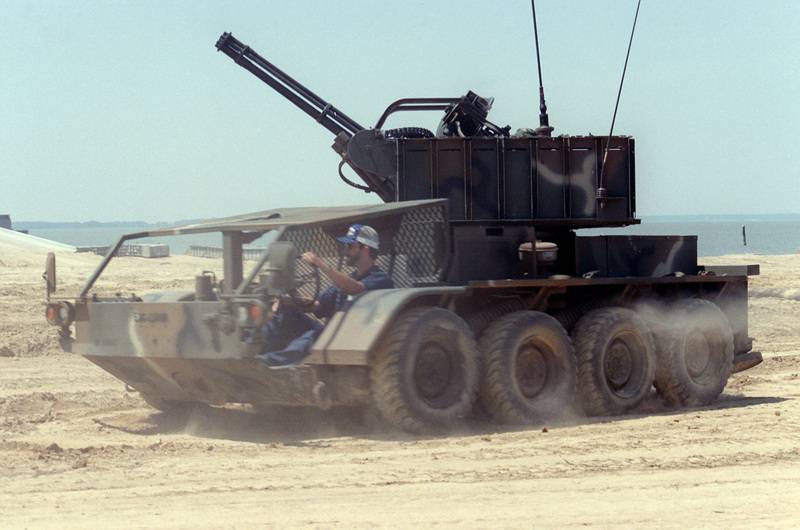
Self-propelled gun moves on sandy terrain. Photo Ftr.wot-news.com
The designers of the Standard Manufacturing Company, using a number of original ideas, created a four-wheel wheeled combat vehicle with a characteristic crew cabin and a large cargo platform suitable for mounting special equipment. In the Vulcan Wheeled Carrier project, the platform was intended for the installation of a full revolving combat module with an automatic gun. From the point of view of the general architecture, the new model of military equipment differed little from some other developments of that time.
The main unit of the perspective chassis has become a rather simple structure. According to reports, the prototype VWC was not equipped with armor and was made only of structural steel and other materials. A large non-standard cabin was located in the front of the hull, and behind it were the engine compartment and the volumes to install the transmission. Behind the engine, a small fighting compartment was located, containing some elements of the tower and the gunner’s workplace.
Probably due to the experimental nature of the project, a new type of ZSU received only a partially closed cockpit located in front of the hull. The volume for the crew was formed by a pair of inclined lower sheets connected to low sides and a horizontal bottom. Upper frontal parts were missing; instead they had a pair of pillars, to which was attached a light lattice roof. The glazing was completely absent, which, however, simplified the embarkation and disembarkation.
The main body had a rectangular cross section with bevels in the bottom area. Directly behind the cab, a lightweight casing of the power plant with mesh inserts was placed, behind which there was a cylindrical unit with a tower shoulder strap. In the stern there was a large rectangular case with a folding rear wall. Along the sides were installed large shelves that served as wings.
The prospective chassis was equipped with an eight-cylinder V-shaped diesel engine of the Detroid Diesel brand, which developed power up to the 135 hp. To save volumes inside the hull, hydromechanical transmission was used, which distributed torque to all eight driving wheels. It was a similar transmission that allowed designers to reduce the height of the car while obtaining all the desired features. In other words, the internal chassis units associated with the chassis did not interfere with the installed combat module.
In the new chassis family, engineers at the Standard Manufacturing Company used the original chassis architecture, known as the Trailing Arm Drive. On each side of the hull Vulcan Wheeled Carrier was asked to install four wheels on the suspension type TAD. The main element of this design was the balancer turned back, which resembled torsion suspension devices. One end of the balancer was proposed to be movably mounted to the body, and the second mounted wheel. From above, with a certain inclination forward, the spring connected to a balance lever shoulder was established. Under load, she worked on stretching.
The balancer of the TAD system differed from similar devices by increased dimensions and was actually a hollow beam. Inside the balancer, at its ends, there were two gears connected by a chain transmission. The suspension assembly of the balancer to the body included the shaft from the onboard transmission of the transmission, through which power was supplied to one gear, then to the chain, second gear, and from it to the wheel. For all its complexity, such a design of the chassis combined four-wheel drive and high throughput, provided a large course of balancers.
The undercarriage got suspension controls. Depending on the terrain, the driver could change the ground clearance. Swing balancers with springs changed this parameter from 10 to 22 inches (254-559 mm). Despite the change in ground clearance, the suspension, in all conditions, “worked out” any unevenness of the terrain.
At the design stage, it became clear that the return of the M61 gun does not match the characteristics of the new chassis. In this regard, it was necessary to abandon the shooting on the move and equip the combat vehicle with jacks. In front of the cabin and on the sides of the hull aft sheet, three hydraulic outriggers with round supports were positioned. During combat work, the supports lay down on the ground and took on the weight of the machine. In the retracted position, the front circular support went into the niche of the lower frontal sheet, and the stern was located under the rear bumper.
The driver and commander of the ZSU should have been located in a double front cabin of a semi-open type. Their jobs had no protection and were not even equipped with glazing. From some external influences they were protected only by a lattice roof over their heads. The left workplace of the cabin was intended for the driver, the right - for the commander. It was proposed to get into the cabin through large openings between the wings of the front wheels and the roof. Between the two jobs was a hydraulic cylinder front jack.
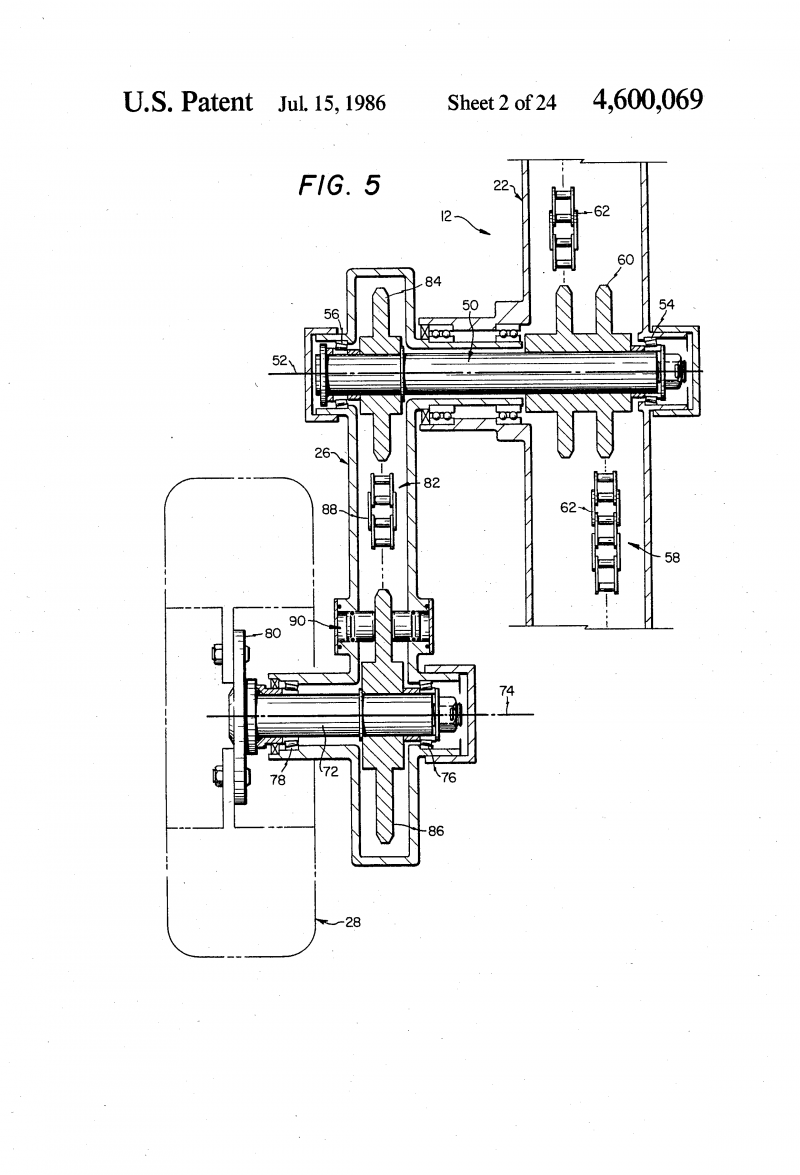
The scheme of the chassis type Trailing Arm Drive, coupled with onboard power distribution. Patent drawing
On the rear cargo platform of the car with the help of a special ring with shoulder straps, it was proposed to install a combat module with anti-aircraft weapons. The SMW VWC project involved the use of an original swing tower, based in part on the existing ZNS M163 units. To a certain extent, this unification has simplified the assembly of a prototype, and also should have helped in the further operation of equipment.
Directly on the chase, there was an asymmetrical horizontal platform with mounts for various devices. In front of the platform, on a longitudinal axis, a rocking installation was placed with an 20-mm six-barreled M61 gun. Relatively heavy weapon mounted on a sturdy frame with spring balancing devices. Electric drives of vertical pickup, duplicated by manual mechanisms, were used.
The left side of the platform was given under the installation of a large box for ammunition. Due to the high rate of fire of the Vulcan cannon, the combat vehicle needed a large ammunition and a box for it, differing in size. It is curious that the outer wall of the large box was an additional defense of the gunner and completely covered it from attacks from the left.
On the right board placed a means of guidance. According to the operating experience self-propelled M163, a new VWC equipped with radar guidance AN / VPS-2. The antenna of this station was placed on its own rack with vertical guidance drives. Movement of the antenna was carried out synchronously with the vertical tip of the gun. Various elements of the radar and other devices were placed in boxes in the stern of the platform. Data from the locator was transmitted to a computing device that automatically controlled the gunner’s sight.
In the center of the turning tower there was a gunner’s workplace. He could freely observe the surrounding air situation “over the side,” if necessary, aim the gun and open fire. The available automation equipment and mechanization helped him in the combat work.
Despite the lack of armor and maximum structural relief, the promising anti-aircraft self-propelled SMC Vulcan Wheeled Carrier was not the most compact and lightweight. The total length of the car reached 5,5-6 m, width - about 2-2,5 m. Due to the special chassis design, it was possible to reduce the size of the frontal projection. The total height of the vehicle, taking into account anti-aircraft armament (in the stowed position) did not exceed 2,2-2,5. The combat weight reached 16 thousand pounds (7,26 t).
In 1982-83, Standard Manufacturing built the first and, as it turned out, the only new prototype ZSU prototype. Moreover, as far as is known, it was the only real machine built within the entire family of projects. Other prototypes on a unified or similar chassis were not built and not tested.
An experienced self-propelled self-propelled gun with its own name Excalibur entered the range and in the shortest possible time showed all its capabilities. For obvious reasons, the testers were primarily interested in the parameters and potential of the original chassis. The car was equipped with a fairly old instrument, and its parameters were established a long time ago. However, during one of the test phases, it was necessary to check the interaction of a sufficiently powerful gun with an unusual chassis design.
During sea trials, it was found that a fully equipped ZSU is capable of reaching a speed of up to 45 miles per hour on the highway (more than 70 km / h). Power reserve - up to several hundred kilometers. Mobility parameters in different landscapes were also determined. The suspension with a large swing and low-pressure wheels allowed the self-propelled gun to move on soft soils and snow, as well as climb the slopes of the high steepness. According to known data, in terms of mobility of the chassis with units such as the Trailing Arm Drive, at least, not inferior to other wheeled vehicles.
Before shooting, the Excalibur had to be jacked out, which to some extent reduced its real combat potential. At the same time, regardless of the pointing angles, the self-propelled gun maintained an acceptable position and behaved quite stably. In terms of combat use ZSU SMC VWC differed little from the serial M163.
In general, the two cars turned out to be worthy rivals for each other. According to one of the parameters, the new wheeled self-propelled gun was ahead of the caterpillar predecessor, but in other respects it lagged behind it. The obvious advantages of the perspective sample were improved mobility characteristics regardless of the terrain. Also, the wheeled chassis was easier to operate and cheaper to manufacture. But at the same time, the new car was notable for the lack of any protection and limited combat capabilities.
In the mid-eighties, the prototype Vulcan Wheeled Carrier with its own name Excalibur was shown to representatives of the US military, and they determined the future of the original design. New anti-aircraft self-propelled installation was considered unsuitable for adoption. Several positive features and advantages provided by design innovations could not outweigh the whole set of drawbacks.
The most notable problem of the SMW VWC project was the lack of any crew protection. People did not have protection not only from bullets and shrapnel, but even from wind and rain. Already for this reason, the car was not of particular interest to the troops. The new design of the chassis, with all its advantages, was very difficult to manufacture and operate, and in this respect was inferior to other wheeled vehicles. Placing a separate gear inside the balance bar made it difficult to maintain, and the open installation of the springs led to some risks.
Another serious problem was the use of weapons. The M163 self-propelled gun, equipped with a 20-mm automatic cannon with radar guidance tools, had by this time ceased to organize the military. The new machine with similar equipment, which has no advantages over the existing model, did not need the army.
After this decision, the military work on the project Vulcan Wheeled Carrier stopped. The only built prototype went to the sump. In the future, he was removed from the combat module with weapons and equipment. Over time, the remaining chassis was partially dismantled. Storage in the open air has a bad effect on any technique, and the SMC VWC self-propelled gun is no exception. The unique machine is still rusting and waiting for it to be sent for restoration or remelting.
It should be recalled that the anti-aircraft self-propelled unit was created by engineers of the Standard Manufacturing Company in order to promote a new chassis design and a whole family of vehicles built on its basis. As the work on the VWC theme was completed, the designers were engaged in the development of the proposed chassis and worked on the creation of new designs for various purposes. Studied the possibility of using the chassis in different roles, and in addition, proposed improvements to its design.
All major developments on the subject of promising chassis became the topics of patents. In total, SMC received a dozen of such documents confirming its rights to original ideas. Patents cited alternative TAD suspensions. In particular, the possibility of its use was considered together with the transmission of the on-board circuit with power distribution through chain transmissions. The possibility of installing a spring with different angles and placing an additional shock absorber inside it was also studied.
On the basis of the chassis of various versions, it would be possible to build a variety of transport vehicles for people and cargo, both armored and unprotected. The chassis could become a carrier of anti-aircraft weapons in the form of guns or missiles, anti-tank guided complexes, etc. In general, multi-axle vehicles with a full weight up to 8-10 could find application in various areas and have a noticeable influence on the development of the fleet of vehicles of the US Army.
According to the plans of the early eighties, new developments should be promoted with the help of a self-propelled self-propelled gun of an unusual appearance. This machine, having coped with the basic tests, failed to receive positive ratings from a potential customer. As a result, it was abandoned, and soon SMC had to curtail work on the whole subject of the new chassis, since they now had no prospects.
To get into the troops, a new model of military equipment must not only show high performance, but also meet a number of different requirements. The promising Vulcan Wheeled Carrier project from the Standard Manufacturing Company did not meet the basic requirements of the potential customer, which led to its closure. The curious project of an anti-aircraft self-propelled gun of a specific appearance has remained a bright but meaningless episode in stories American military equipment.
Based on:
http://ftr.wot-news.com/
https://secretprojects.co.uk/
http://tank-net.com/
https://strangernn.livejournal.com/
http://shushpanzer-ru.livejournal.com/
https://patents.google.com/patent/US4600069A/
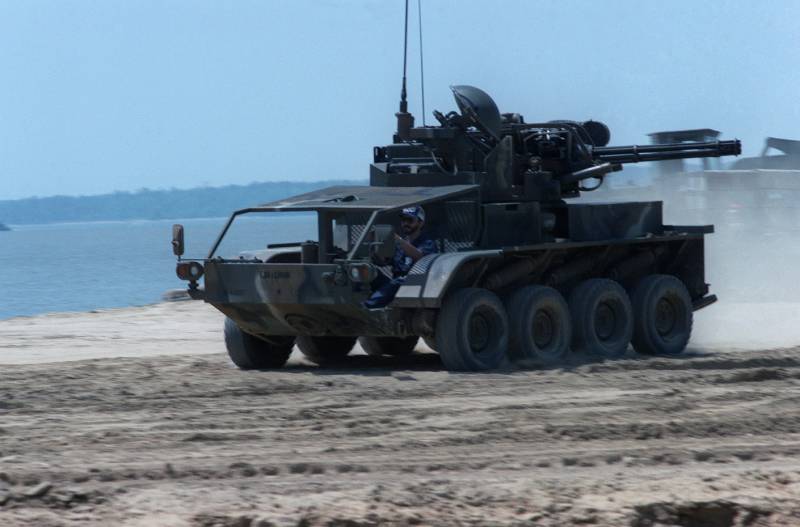
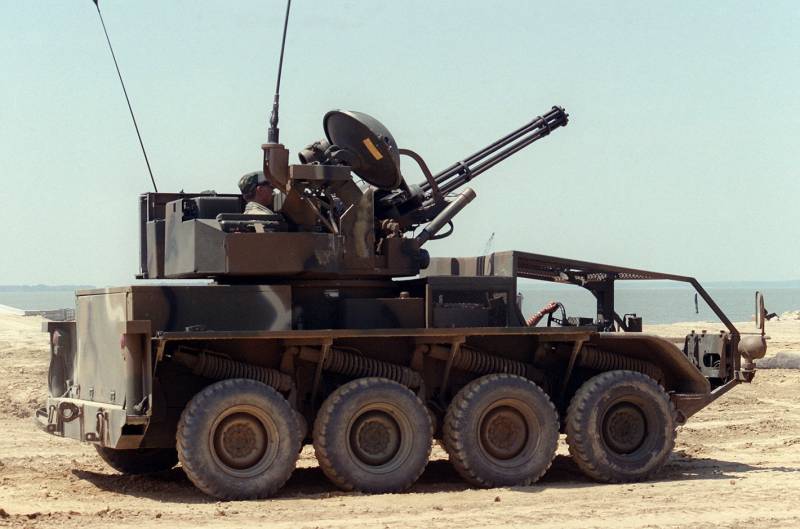
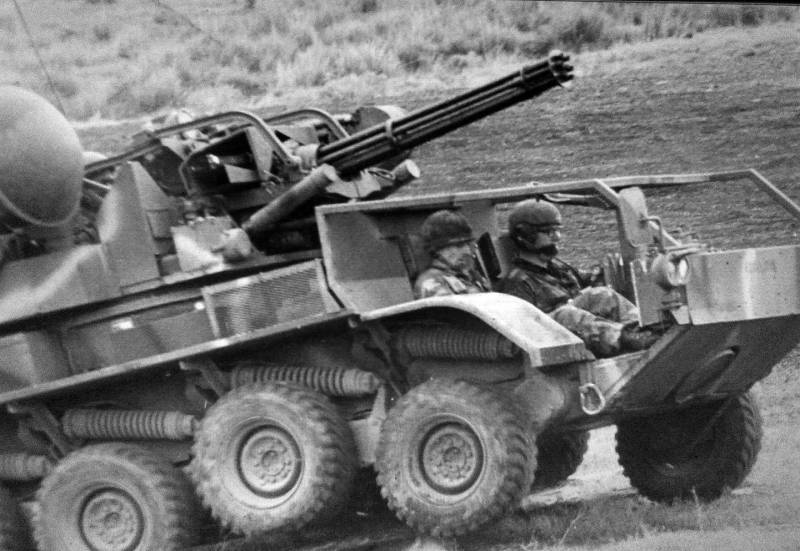
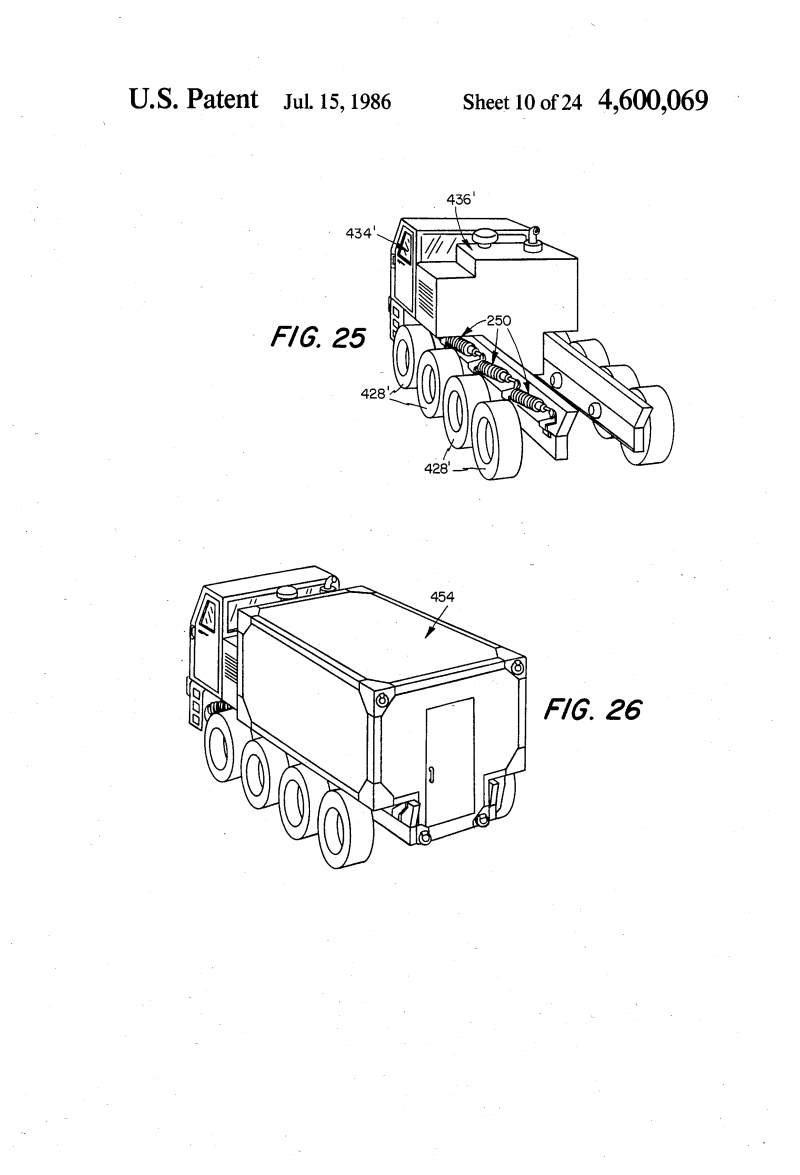
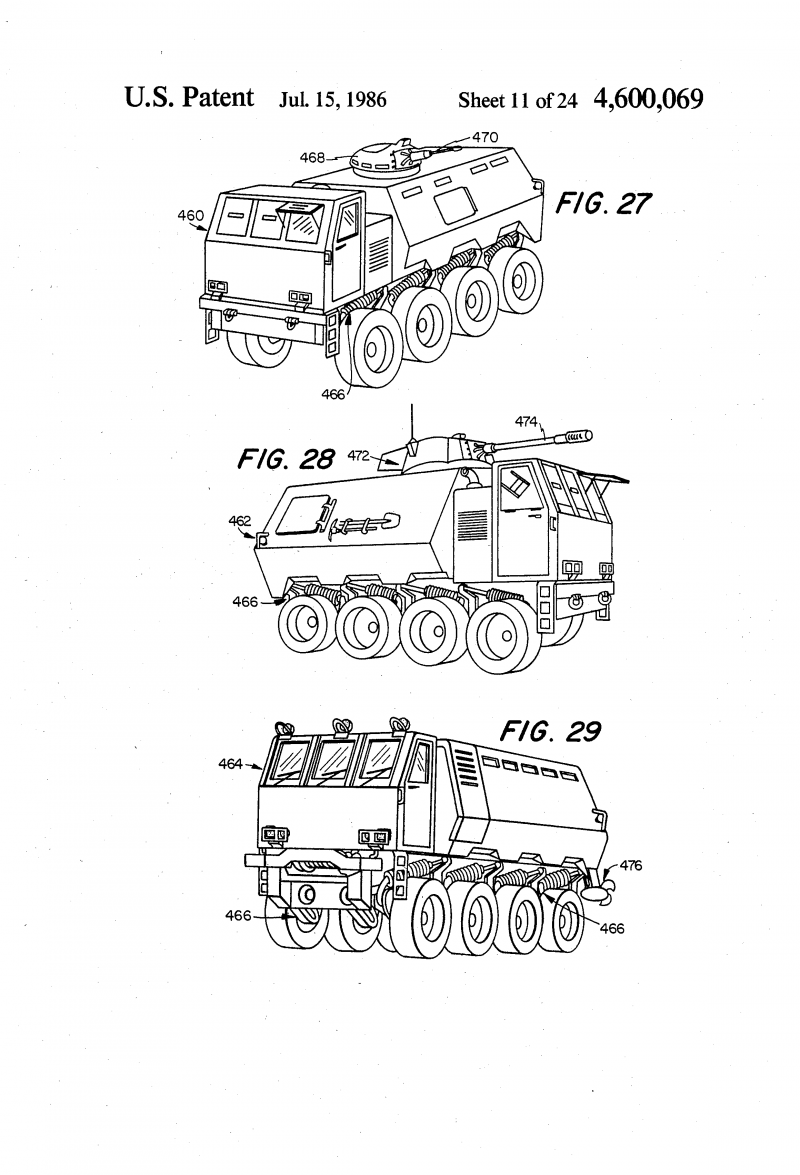
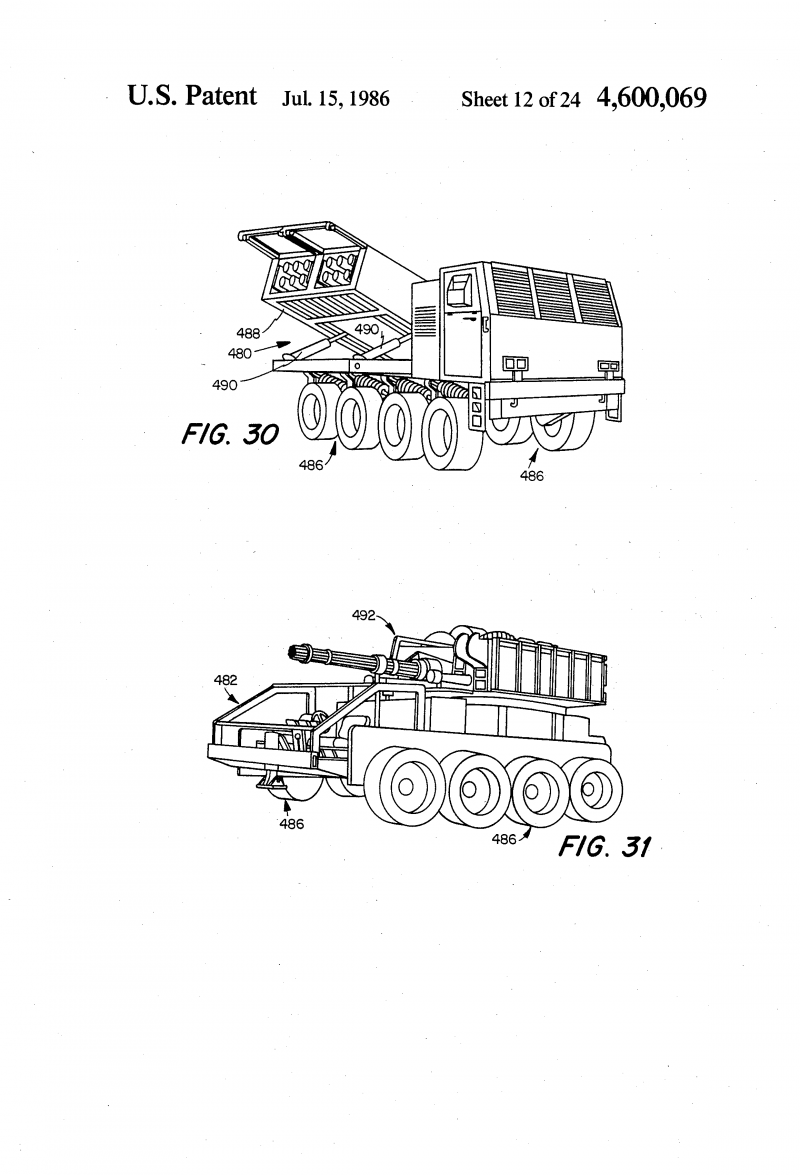
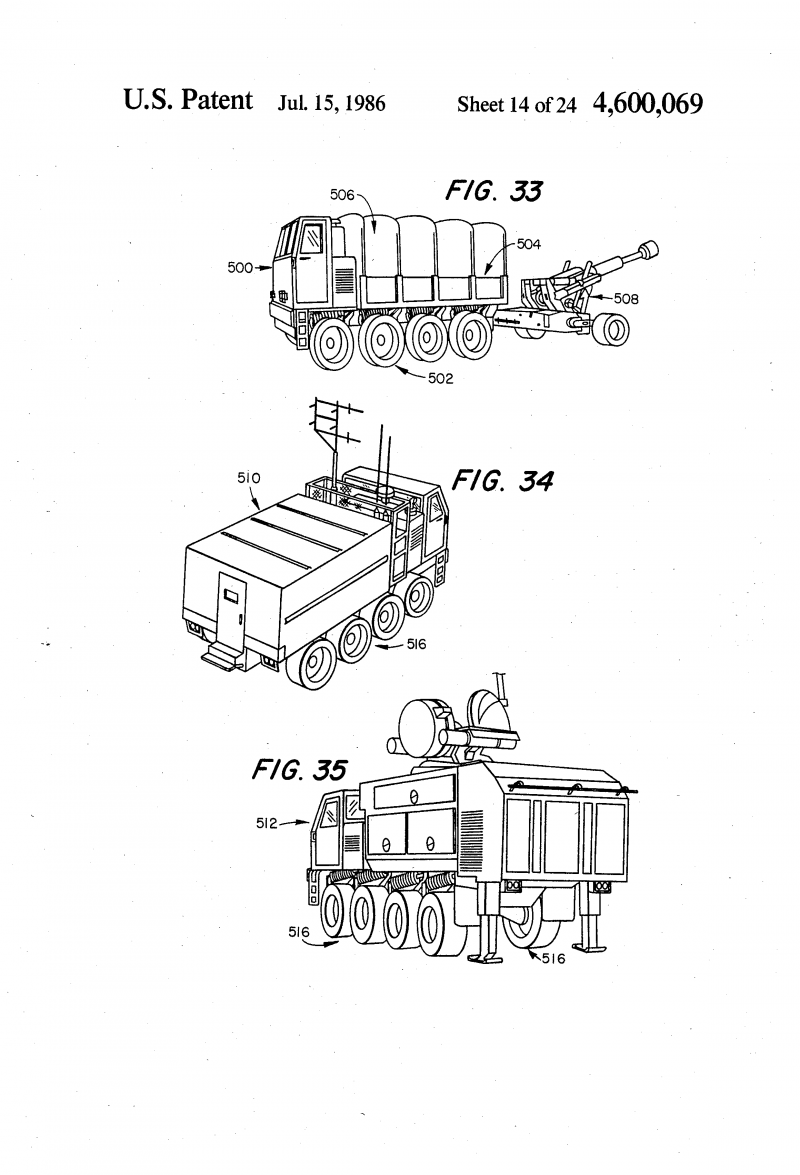
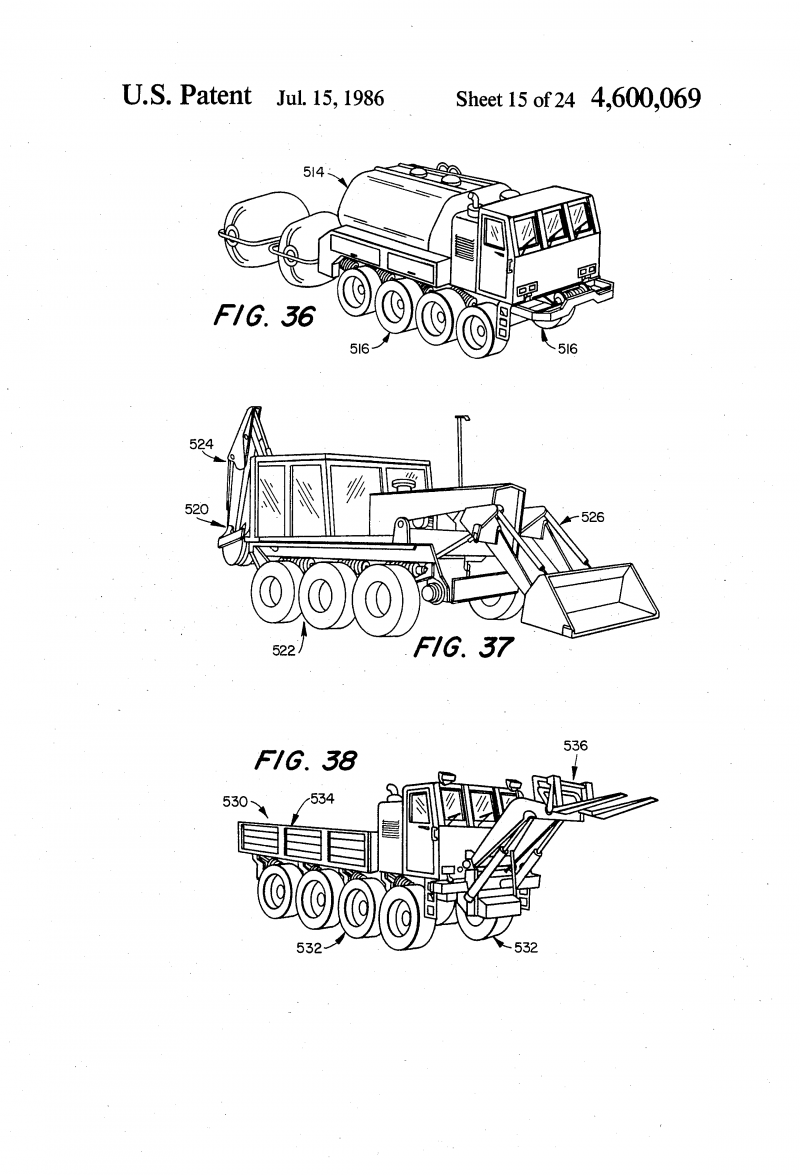
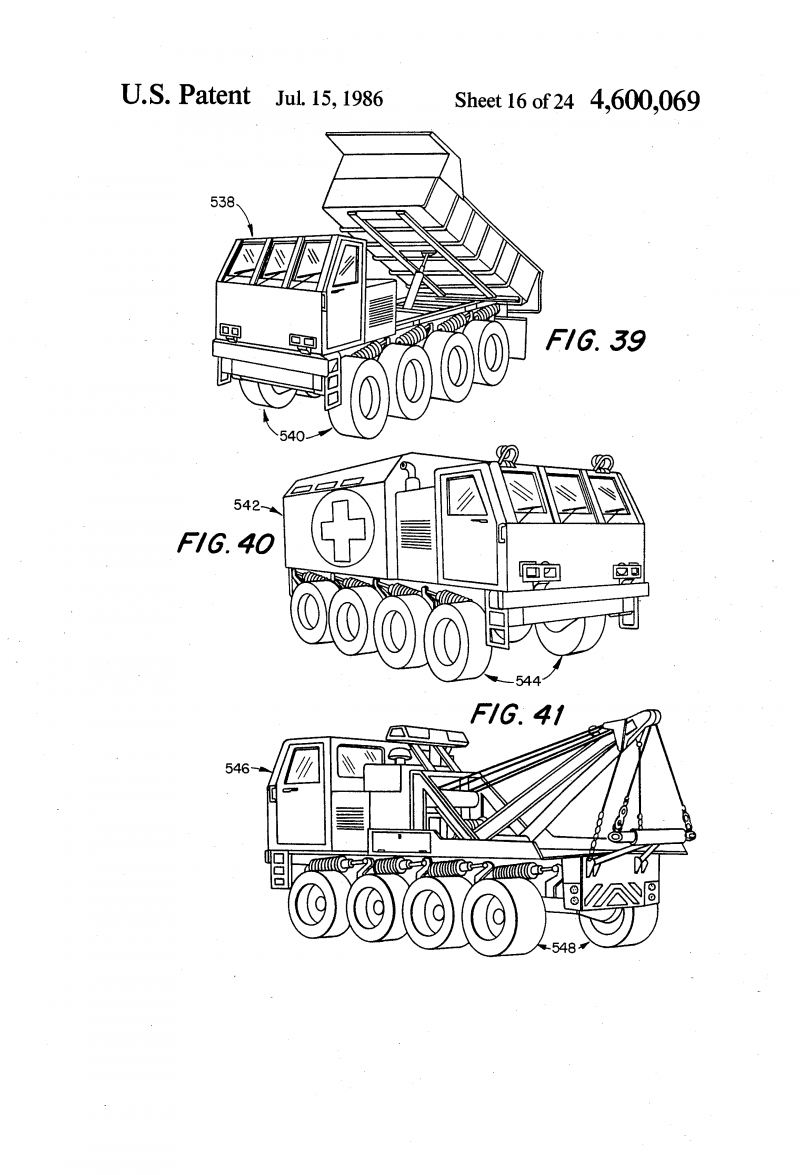
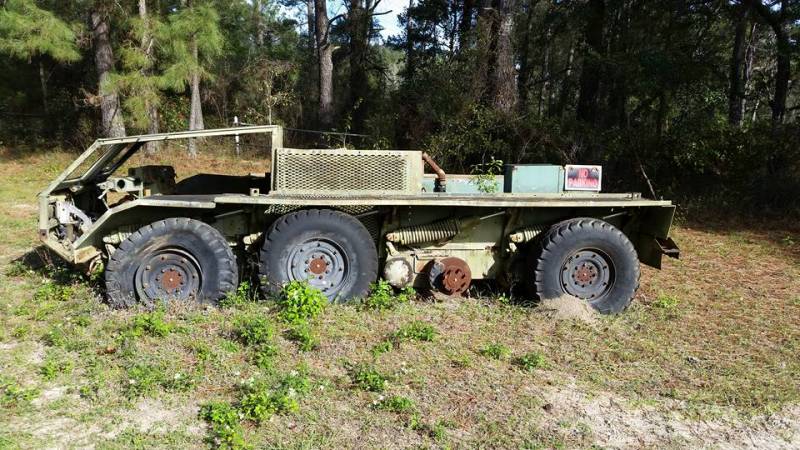
Information